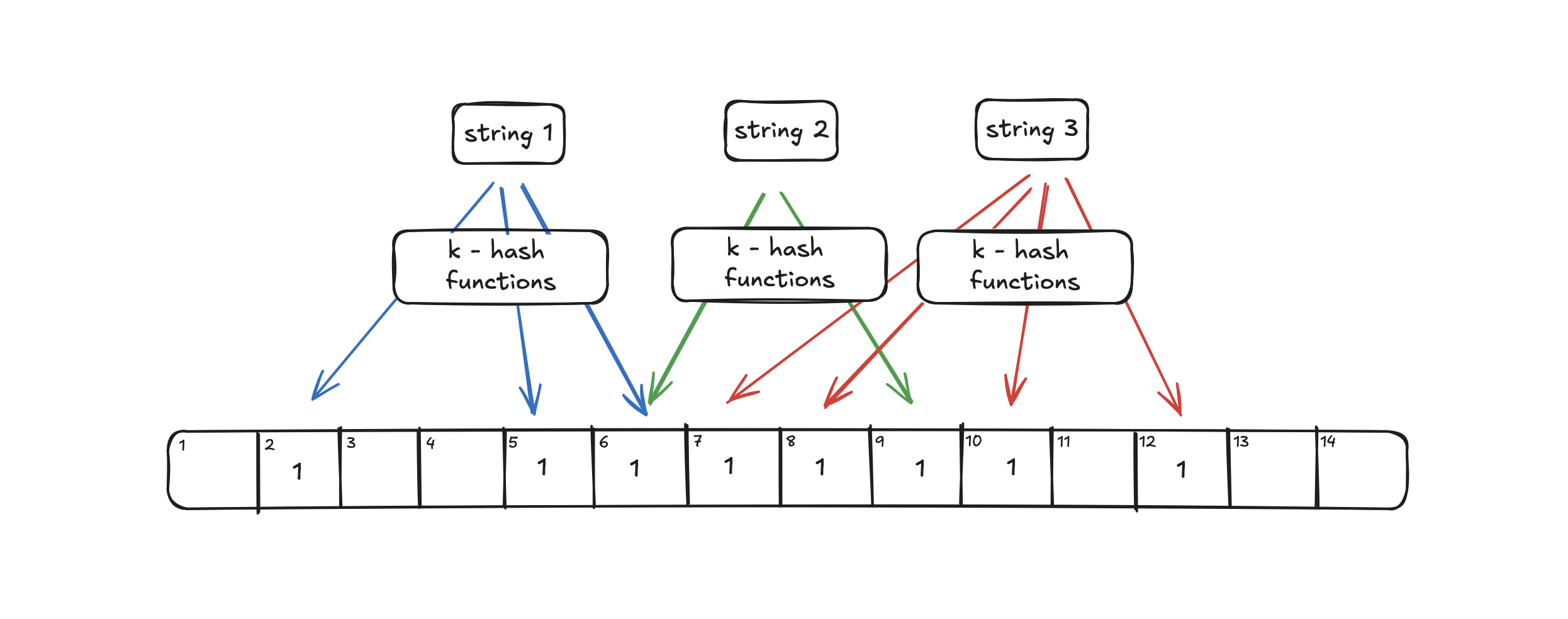A collection of high performance bloom filter data structures for use in C. All filters use the 64-bit version of Cyan4973's xxhash algorithm
This is a gist of the Bloom Filter. For an in-depth explanation and a much more visual understanding, checkout this amazing article by systemdesign.one.
While creating an account, you want to enter a cool username, you entered it and got a message, “Username is already taken”. You then tried a bunch of variations, and all kept saying that the username was taken until you found one that was still available. In this process, ever wondered how the website manages to search through millions of usernames to determine if it is taken?
Here is where a Bloom filter is used.
A Bloom filter is a space-efficient probabilistic data structure that is used to check whether an item is a member of a set. The bloom filter will always say "yes" if an item is a member of a particular set. However, it might still say "yes" although an item is not a part of that set (false positives).
The bloom filter data structure is a bit array of length n as shown above. The position of the buckets is indicated by the index (0–n) for a bit array of length n. All the bits in the bloom filter are set to zero when the bloom filter is initialized (an empty bloom filter). The bloom filter discards the value of the items but stores only a set of bits identified by the execution of hash functions on the item.
The following operations are executed to add an item to the bloom filter:
- the item is hashed through k hash functions
- the modulo n (length of bit array) operation is executed on the output of the hash functions to identify the k array positions (buckets)
- the bits at all identified buckets are set to one
There is a probability that some bits on the array are set to one multiple times due to hash collisions.
The following operations are executed to check if an item is a member of the bloom filter:
- the item is hashed through the same k-hash functions
- the modulo n (length of bit array) operation is executed on the output of the hash functions to identify the k array positions (buckets)
- verify if all the bits at identified buckets are set to one
If any of the identified bits are set to zero, the item is not a member of the bloom filter. If all the bits are set to one, the item might be a member of the bloom filter. The uncertainty about the membership of an item is due to the possibility of some bits being set to one by different items or due to hash function collisions.
A bloom filter implemented using a byte array (with each bit in the filter assigned to a byte). This reduces the number of instructions necessary to perform a lookup in the go 1.4 and latest gcc-go compilers. As a result, the NaiveBloomFilter will almost always be faster than the standard variants at the cost of an 8x penalty in memory usage. For small to medium-sized filters, using bytes instead of bits means that more of the filter can fit into the CPU cache. Cache access is much faster than main memory access, leading to significant speed improvements.
Accessing and manipulating bytes is often more efficient than manipulating individual bits. Modern processors are optimized for byte-aligned operations, which can reduce the number of CPU instructions needed for lookups and insertions.
This version uses centralized locking (via a RWMutex) and is perfect for a filter that will mainly be used for reads or in a single threaded context (use the LookupAsync and InsertAsync functions to bypass the mutex in this case). For very small (<20 million buckets) bloom filters, the NaiveBloomFilter can yield enormous performance boosts since most of the filter fits in the processor cache.
Make sure you have CMake installed. Clone the repository and then download vcpkg to install required libraries.
git clone https://github.com/Microsoft/vcpkg.git
cd vcpkg
./bootstrap-vcpkg.sh
./vcpkg integrate installInstall the dependencies
./vcpkg installRun CMake
cmake ..Build and run the bloom test.
make
./bloom
